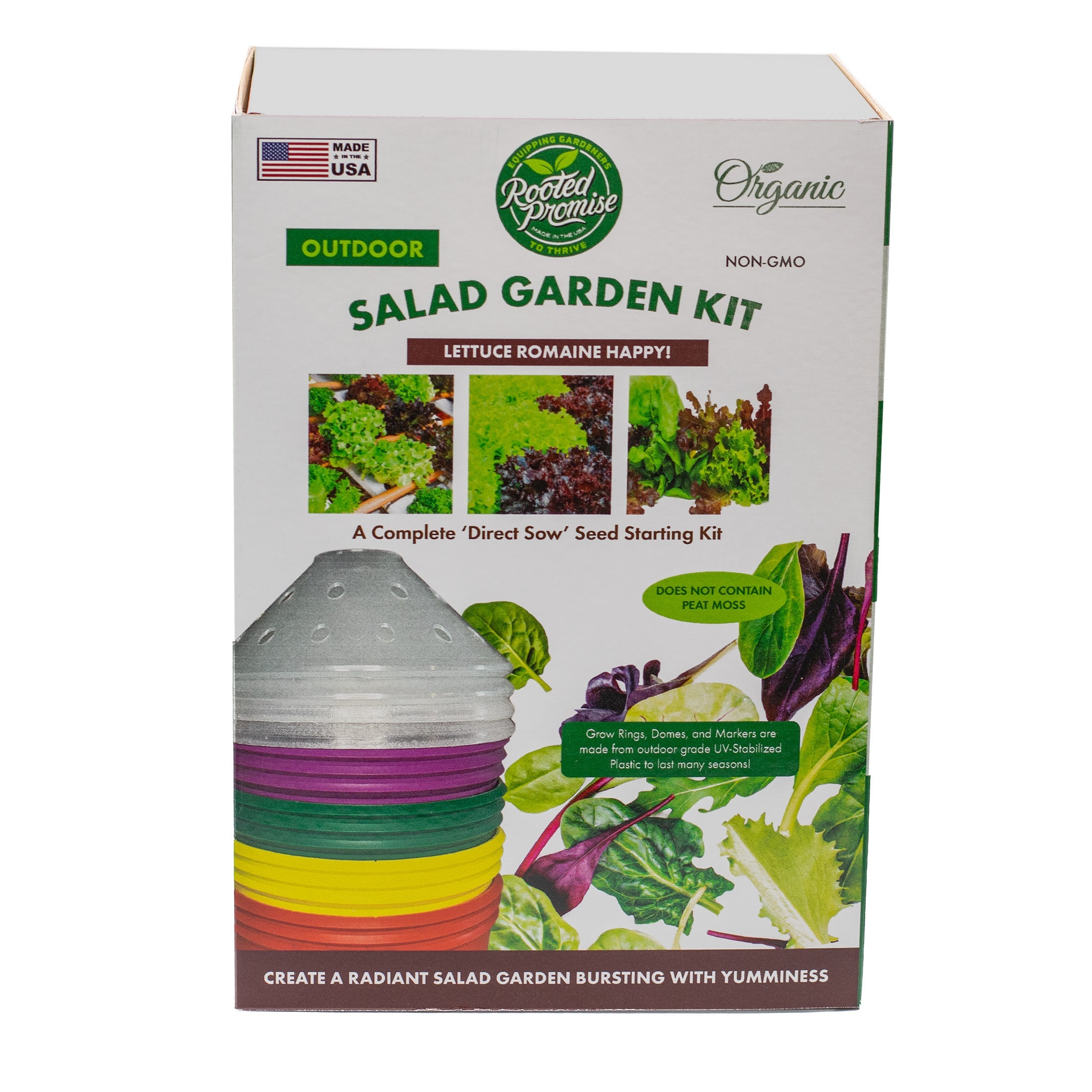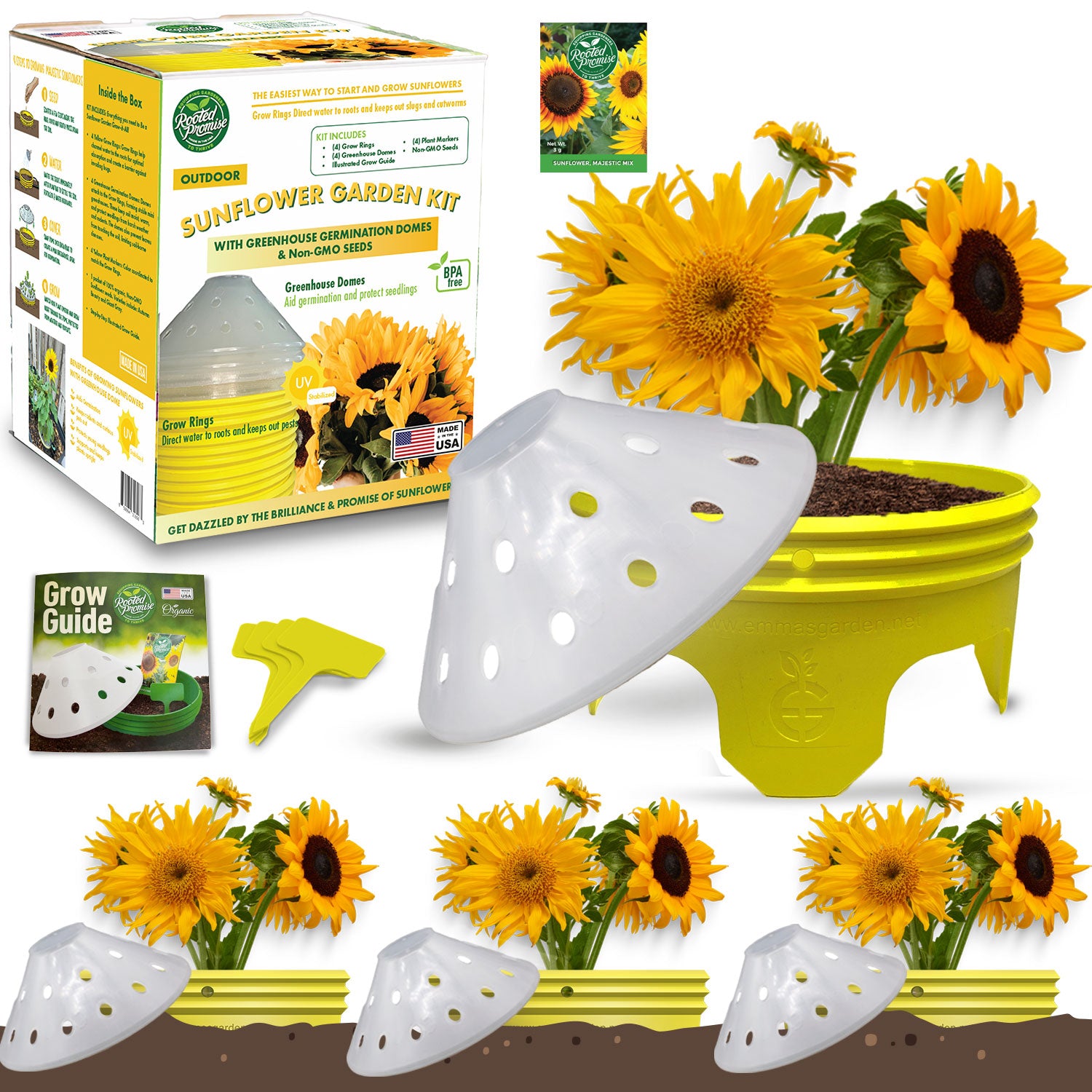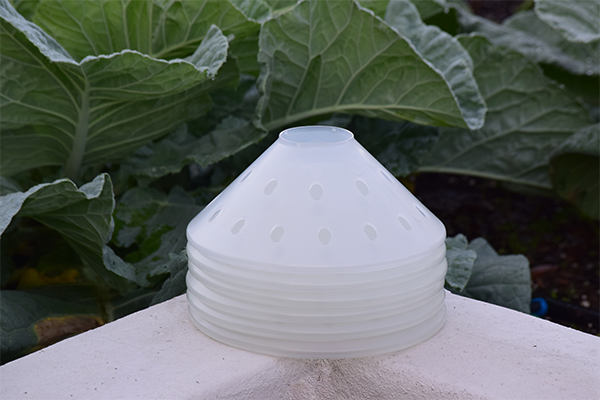What is the secret to growing spinach?
Table of Content
-
Introduction
-
Why grow spinach?
-
Health benefits
-
Versatility in cooking
-
-
Best conditions for growing spinach
-
Soil requirements
-
Climate and temperature
-
Sunlight needs
-
-
Preparing the soil for spinach
-
Soil testing
-
Soil amendments
-
Choosing organic vs. synthetic fertilizers
-
-
Planting spinach
-
When to plant spinach
-
Seed selection
-
Planting techniques
-
-
Caring for spinach plants
-
Watering requirements
-
Weed control
-
Pest and disease management
-
-
Harvesting spinach
-
When to harvest
-
How to harvest properly
-
Post-harvest storage
-
-
Common problems and solutions
-
Dealing with bolting
-
Pest infestations
-
Nutrient deficiencies
-
-
Tips for a successful spinach crop
-
Conclusion
Introduction
Growing spinach might seem like a breeze, especially if you’ve been inspired by Popeye’s legendary strength-boosting can of the leafy greens. But don’t let the cartoon magic fool you—cultivating spinach comes with its own set of challenges!
From battling pesky pests to navigating finicky weather conditions, getting those vibrant green leaves from seed to salad bowl can sometimes feel like a test of your gardening mettle. But fear not, fellow gardeners! To celebrate National Fresh Spinach day, we're going to uncover the secrets needed to cultivate your own lush, healthy spinach plants.
To ensure credibility and provide you with reliable information, we've incorporated insights from authoritative sources such as the United States Department of Agriculture (USDA) and academic institutions like Pennsylvania State University's Extension. These resources serve as a strong foundation for understanding best practices in spinach cultivation.
Why grow spinach?

Spinach isn't just another leafy green; it's a powerhouse of nutrition and a versatile addition to any garden. But why should you consider growing spinach?
Health benefits
Spinach is packed with essential vitamins and minerals that contribute to overall well-being. According to the National Institutes of Health (NIH), spinach is rich in vitamins A, C, and K, as well as iron, calcium, and magnesium. These nutrients are vital for maintaining healthy skin, bones, and eyes. Additionally, spinach is loaded with antioxidants that help combat chronic diseases and reduce inflammation.
Versatility in cooking
In the kitchen, spinach is a true chameleon, adapting to a wide range of dishes. Whether you’re making a refreshing salad, a hearty soup, or a delectable smoothie, spinach can be a star ingredient. Its mild flavor and tender texture make it a favorite among chefs and home cooks alike. The BBC Food website offers numerous recipes showcasing spinach's culinary versatility, from classic spinach quiche to innovative spinach pesto pasta.
So, why grow spinach? The answer is simple: for its unparalleled health benefits and culinary flexibility.
Best conditions for growing spinach
To ensure this leafy green thrives, it's crucial to create the best conditions for its growth.
Soil requirements
Spinach flourishes in well-draining, fertile soil with a pH level between 6.5 and 7.5. It's akin to providing a nurturing bed for a newborn—spinach needs a balanced mix of nutrients to grow robustly. According to the Natural Resources Conservation Service (NRCS), enriching your soil with organic matter such as compost can significantly enhance its fertility and structure, creating an ideal environment for spinach roots to expand.
Climate and temperature
Spinach has a penchant for cooler climates, much like a snow-loving penguin. It thrives in temperatures ranging from 50°F to 70°F. Warm weather can cause spinach to bolt, leading to bitter leaves and premature seeding. The National Weather Service (NWS) provides up-to-date climate information, which can help you plan the best planting times and avoid temperature extremes that could jeopardize your crop.
Sunlight needs
While spinach enjoys basking in the sun, it prefers partial shade to full sun, especially in warmer regions. Too much sunlight can stress the plant, while too little can stunt its growth. The University of Minnesota Extension recommends planting spinach in areas that receive 4-6 hours of sunlight daily, ensuring it gets just the right amount of light to photosynthesize efficiently.
By tailoring your gardening practices to meet these specific needs, you're setting the stage for a lush, productive spinach garden.
Preparing the soil for spinach
The soil in which you plant your spinach plays a pivotal role in its success. Preparing the soil meticulously can make the difference between a lackluster crop and a verdant, vibrant harvest. Let’s dig into the essential steps for soil preparation.
Soil testing
Before planting, it's crucial to test your soil to determine its pH and nutrient levels. You want to ensure that your soil is in tip-top condition for supporting spinach growth. The Environmental Protection Agency (EPA) offers comprehensive guidelines on soil testing, which can help you identify any deficiencies or imbalances that need addressing.
Soil amendments
Once you’ve conducted a soil test, the next step is to amend your soil based on its specific needs. Adding organic matter, such as compost or well-rotted manure, can enrich the soil, improving its fertility and structure. According to the United States Department of Agriculture (USDA), incorporating organic amendments enhances soil aeration and water retention, creating an optimal environment for spinach roots.
Choosing organic vs. synthetic fertilizers
When it comes to fertilizers, you have a choice between organic and synthetic options. Organic fertilizers, derived from natural sources, provide a slow release of nutrients, fostering sustainable soil health. Synthetic fertilizers, on the other hand, offer a quick nutrient boost but can sometimes lead to soil degradation if overused. The Pennsylvania State University's Extension provides valuable insights into the pros and cons of each type, helping you make an informed decision that aligns with your gardening philosophy.
By meticulously preparing your soil, you’re laying a strong foundation for your spinach plants to thrive. Up next, we'll explore the best practices for planting spinach, ensuring you start your garden off on the right foot.
Planting spinach
The way you begin planting spinach will determine the strength and beauty of the entire structure.
When to plant spinach
Timing is everything when it comes to planting spinach. This cool-weather crop thrives in early spring and fall. According to the Old Farmer's Almanac, the best time to plant spinach is 4-6 weeks before the last spring frost or 6-8 weeks before the first fall frost. This allows the plant to grow during its optimal temperature range, avoiding the scorching summer heat that can cause bolting.
Seed selection
There are several varieties of spinach to consider, each with unique characteristics. For example, 'Bloomsdale' is a widely popular variety known for its robust leaves and cold-hardiness. The Agricultural Research Service (ARS) provides detailed information on various spinach cultivars, helping you select the best one for your garden conditions and culinary preferences.
Planting techniques
Planting spinach seeds requires precision and care. Sow the seeds about ½ inch deep and 1 inch apart in rows spaced 12-18 inches apart. This spacing ensures adequate airflow and reduces the risk of disease. The University of Minnesota Extension recommends thinning the seedlings to about 3-4 inches apart once they reach a few inches in height, allowing each plant enough room to grow vigorously.
By following these planting guidelines, you’re setting the stage for a thriving spinach garden.
Caring for spinach plants
Once your spinach seeds are nestled in the soil, the journey towards a lush harvest has just begun. Your role in caring for these plants is pivotal for their growth and vitality.
Watering requirements
Watering spinach is a delicate balancing act. Spinach prefers consistent moisture, but overwatering can lead to root rot. According to the Food and Drug Administration (FDA), providing about 1 inch of water per week, either through rainfall or irrigation, is ideal. Ensure the soil remains moist but not waterlogged, allowing spinach roots to breathe and absorb nutrients effectively.
Weed control
Weeds are the uninvited guests in your spinach garden, competing for nutrients and space. Regular weeding is crucial to maintain a healthy growing environment. The United States Department of Agriculture (USDA) suggests using mulch to suppress weed growth and retain soil moisture. Organic mulches like straw or grass clippings can create a protective barrier, reducing the time you spend battling weeds.
Pest and disease management
Pests and diseases are the nemesis of any gardener. Spinach is susceptible to pests like aphids and diseases such as downy mildew. Integrated Pest Management (IPM) practices, recommended by the Environmental Protection Agency (EPA), can help you manage these threats effectively. IPM combines biological, cultural, and mechanical methods to control pests and diseases while minimizing environmental impact. Introducing beneficial insects like ladybugs and maintaining proper garden hygiene can go a long way in protecting your spinach plants.
Caring for spinach requires attention and diligence, but the rewards are well worth the effort.
Harvesting spinach
After months of nurturing and care, it's time to reap the rewards. However, knowing when and how to harvest properly can make all the difference in the quality and longevity of your spinach.
When to harvest
Timing your spinach harvest is like picking the perfect moment to pluck a ripe fruit. Spinach is ready to harvest when the leaves are large enough to eat, typically 6-8 weeks after planting. The Old Farmer's Almanac suggests picking the outer leaves first, allowing the inner leaves to continue growing. This method, known as "cut-and-come-again," extends your harvest period, giving you a continuous supply of fresh spinach.
How to harvest properly
Proper harvesting techniques can ensure the longevity and health of your spinach plants. Use a sharp pair of scissors or garden shears to cut the leaves about 1 inch above the base. This encourages new growth and prevents damage to the plant. The United States Department of Agriculture (USDA) recommends harvesting in the early morning when the leaves are crisp and hydrated, reducing the risk of wilting.
Post-harvest storage
After harvesting, proper storage is essential to maintain the freshness and nutritional value of your spinach. Rinse the leaves gently and pat them dry before storing. According to the Food and Drug Administration (FDA), wrapping spinach in a paper towel and placing it in a perforated plastic bag can extend its shelf life in the refrigerator for up to a week. For long-term storage, consider blanching and freezing the leaves, preserving their flavor and nutrients for future use.
Common problems and solutions
Even with the best care, spinach plants can encounter a range of issues that can thwart your efforts. But fear not, every problem has a solution.
Dealing with bolting
Bolting, or premature flowering, is often triggered by high temperatures or long daylight hours, causing your spinach to set seed and become bitter. According to the National Institute of Food and Agriculture (NIFA), choosing bolt-resistant varieties and planting at the right time can mitigate this issue. Providing shade during hot spells and maintaining consistent moisture can also help prevent bolting.
Pest infestations
Pests such as aphids, leaf miners, and slugs are the uninvited diners at your spinach banquet. They can wreak havoc on your plants if left unchecked. Integrated Pest Management (IPM) strategies, recommended by the Environmental Protection Agency (EPA), offer a holistic approach to pest control. This includes introducing natural predators like ladybugs, using organic insecticidal soaps, and maintaining garden hygiene to keep pests at bay.
Nutrient deficiencies
Much like humans, spinach plants can suffer from nutrient deficiencies, manifesting as yellowing leaves or stunted growth. A soil test, as detailed by the Environmental Protection Agency (EPA), can diagnose these deficiencies. Common remedies include adding compost or specific fertilizers to replenish missing nutrients. For instance, a nitrogen deficiency can be addressed by incorporating blood meal or fish emulsion into the soil.
By understanding and addressing these common problems, you can ensure a healthy and productive spinach crop.
Tips for a successful spinach crop
Growing spinach can be an art, blending science with a touch of green-thumb intuition. To help you achieve a bountiful harvest, here are some essential tips that can make all the difference in your spinach gardening endeavors.
Choose the right variety
Different spinach varieties thrive under different conditions. Select bolt-resistant varieties if you live in warmer climates or want to extend your growing season. The Agricultural Research Service (ARS) offers detailed profiles of various spinach cultivars, allowing you to choose the best fit for your specific needs.
Practice crop rotation
To maintain soil health and reduce the risk of diseases, avoid planting spinach in the same spot year after year. Crop rotation, as recommended by the Natural Resources Conservation Service (NRCS), helps prevent soil depletion and disrupts pest life cycles, ensuring a healthier crop.
Use mulch effectively
Mulching not only helps retain soil moisture but also suppresses weed growth. Organic mulches like straw or grass clippings are excellent choices. The United States Department of Agriculture (USDA) suggests applying a thin layer of mulch around your spinach plants to create a protective barrier against weeds and conserve water.
Monitor for pests and diseases
Regularly inspect your spinach plants for signs of pests and diseases. Early detection is key to effective management. The Environmental Protection Agency (EPA) recommends Integrated Pest Management (IPM) practices to address these issues holistically, combining biological, cultural, and mechanical methods.
Maintain consistent watering
Spinach prefers evenly moist soil. Avoid letting the soil dry out completely or become waterlogged. The Food and Drug Administration (FDA) advises providing about 1 inch of water per week, ensuring the soil remains consistently moist but not saturated.
By incorporating these tips into your gardening routine, you can cultivate a thriving spinach crop that rewards you with lush, nutritious leaves. Remember that patience and attention to detail are your greatest allies in the quest for a successful spinach harvest.
Conclusion
From the health benefits that make spinach a nutritional powerhouse to its culinary versatility, the reasons to grow this leafy green are compelling. Ensuring the best conditions for growth, meticulously preparing the soil, and following precise planting techniques can set the foundation for a successful crop. Regular care, including watering, weed control, and pest management, ensures your plants remain healthy and productive.
When it comes to harvesting, timing and proper techniques can make all the difference in maintaining the quality of your spinach. Addressing common problems and employing practical tips can further enhance your gardening success, leading to a bountiful harvest.
With the insights provided by authoritative sources like the United States Department of Agriculture (USDA), the Environmental Protection Agency (EPA), and the Pennsylvania State University's Extension, you are well-equipped to embark on your spinach-growing journey. Remember, patience, attention to detail, and a touch of passion are your greatest allies in this exciting endeavor.











